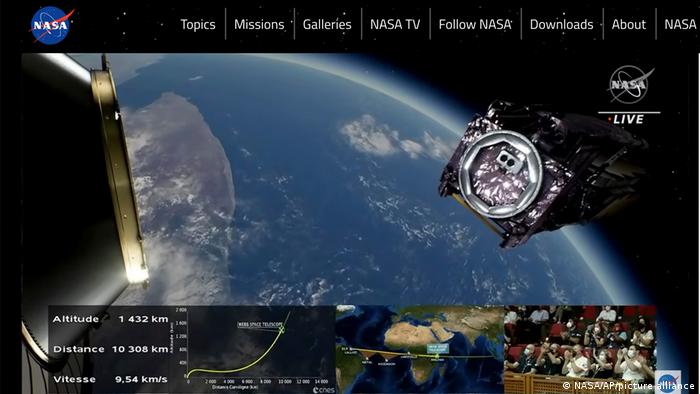NASA’s revolutionary James Webb Telescope launched into space successfully on Saturday from French Guiana.
The instrument is expected to help scientists in the search for new planets and traces of extraterrestrial life.
The telescope is now on its month-long journey to its final destination in solar orbit, which is roughly 1 million miles (1.6 million kilometers) from Earth.
Hurtling through space after flawless launch
The $9 billion rocket blasted off without a hitch inside the French-built Ariane 5 rocket from the European Space Agency’s launch base in the South American territory of French Guiana.
European Space Agency Director-General Josef Aschbacher told reporters the take-off was “a very exciting moment” for his organization. “Team Europe has delivered,” he added.
Over half a million people watched the Christmas Day launch live on NASA’s Youtube feed.
NASA tweeted the moment when after 27 minutes the space telescope broke away from the French rocket.
The most technologically advanced space observatory ever made will now course its way through our solar system toward the sun’s orbit.

The James Webb telescope separates from the Ariana 5 rockets in the last sight humans will get it of the revolutionary probe
Once it gets there it will take five months to become operational. Before James Webb’s infrared eyes become active, it will need to unfurl its solar shield and enormous mirrors.
“We are going to discover incredible things that we never imagined,” NASA administrator Bill Nelson said after the successful liftoff.
But he warned that “there are still innumerable things that have to work and they have to work perfectly … we know that in great reward there is great risk.”
Looking over 13 billion light years into the universe
European Space Agency scientist Anthony Marston, who worked on the James Webb Space Telescope, told DW the new projectile will be “using technology that’s 30 years in advance of what you have with Hubble.”
Using 18 hexagonal panels of gold-coated beryllium it is about 100 times more sensitive than its 30-year-old predecessor Hubble, able to see past clouds of gas and space dust.
“We’re going to get to the very edges of the observable universe as far as 13 and a half billion light years away.” Marston said.
The power of the telescope comes from its ability to collect infrared light from planets, Marston said. Hubble mainly used optical and ultraviolet wavelengths to peer into the universe.
James Webb, after which the telescope is named, was one of the pioneering figures of NASA during the 1960s.
The project is an international collaboration between NASA, European and Canadian space agencies.
jc/wd (Reuters, AFP)
James Webb Telescope launches into space
Source: Pinoy Pop News
0 Comments